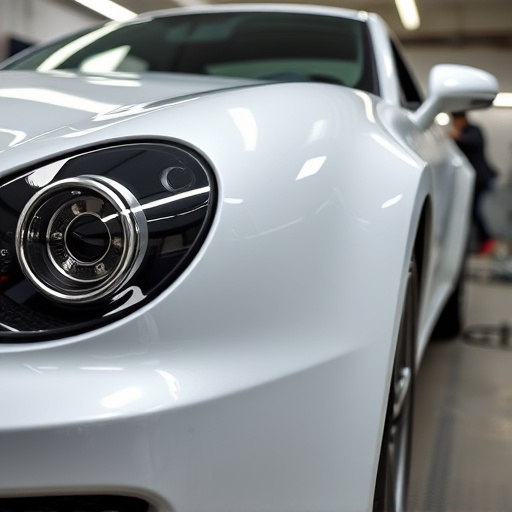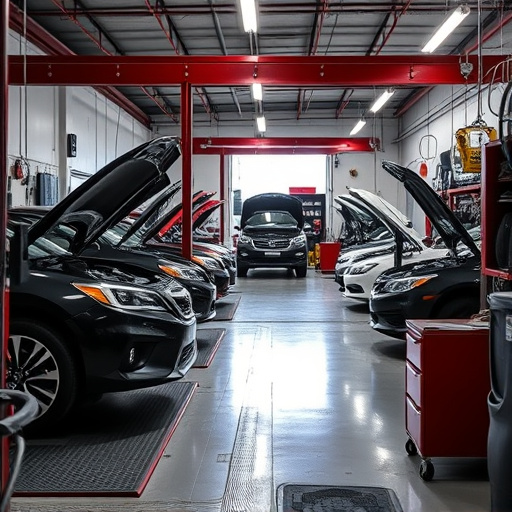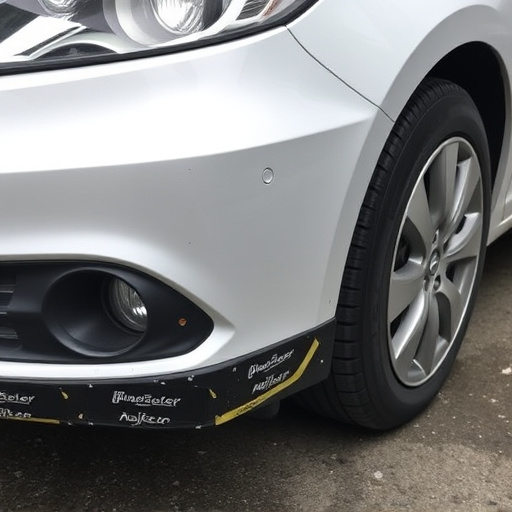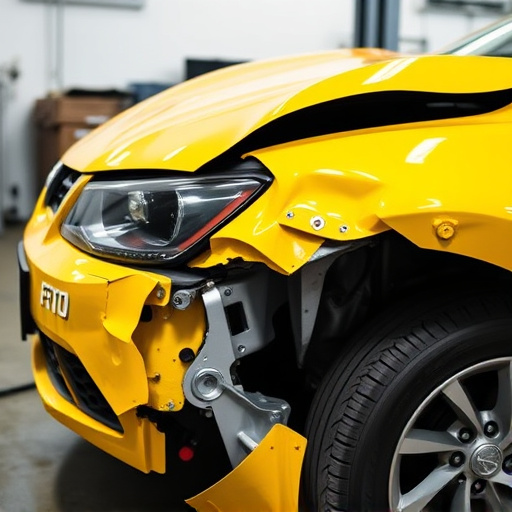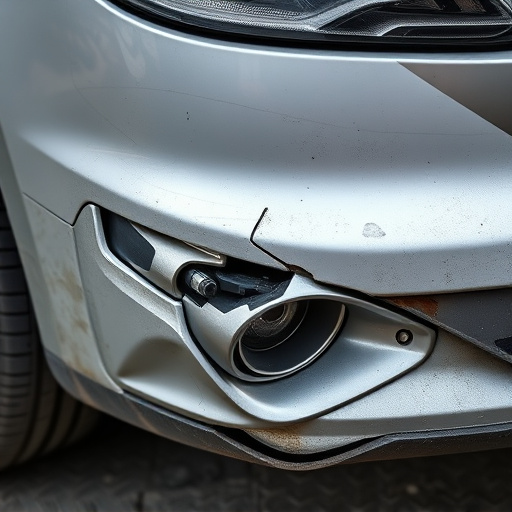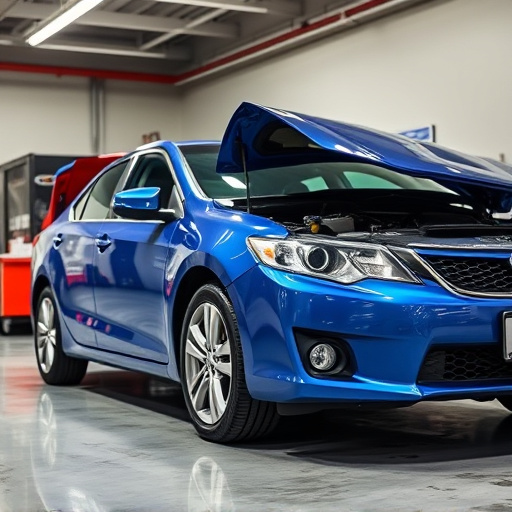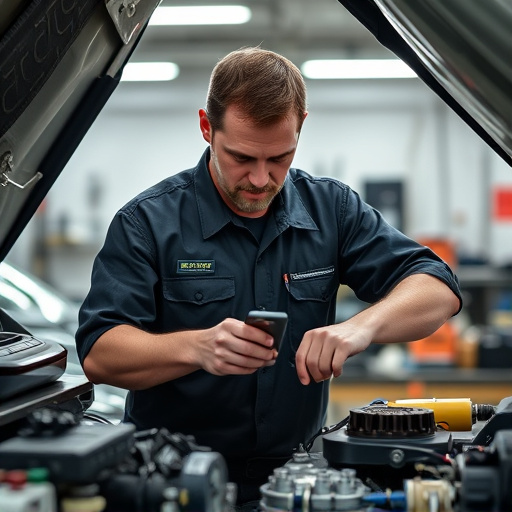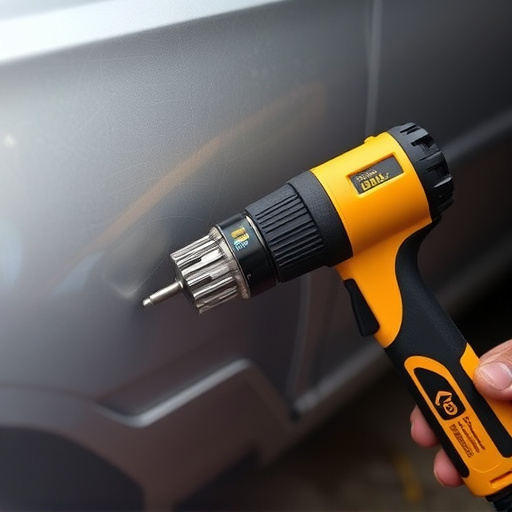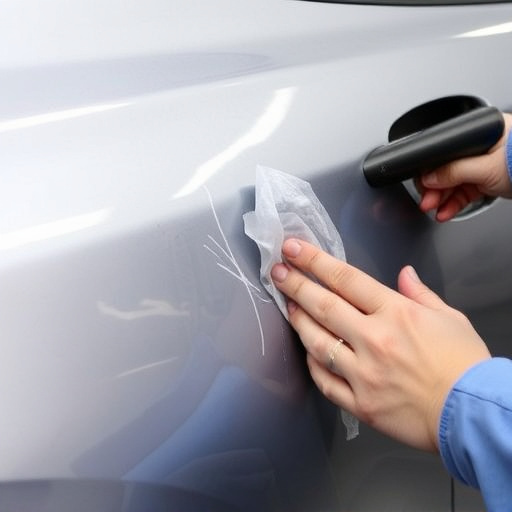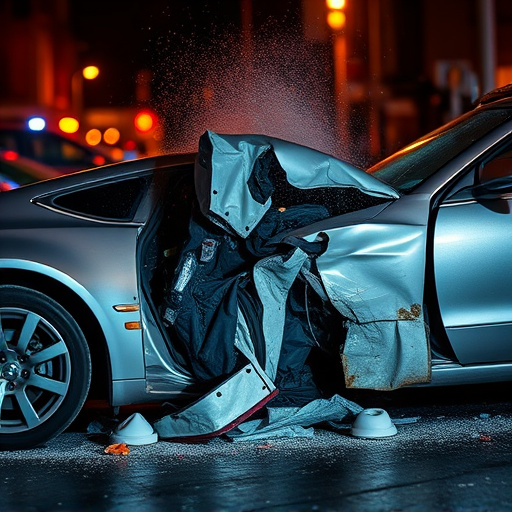Tesla repeater cameras offer 360-degree visibility, crucial for safety features like autonomous driving. In case of a side collision, even minor damage can affect camera functionality, necessitating a professional Tesla repeater camera replacement. Repairs should assess housing and lenses for cracks or misalignments, utilizing paintless dent repair techniques to preserve the vehicle's original finish. After replacing the camera, thorough testing from various angles ensures optimal performance and safety.
Tesla vehicles are equipped with advanced camera systems, including repeater cameras, that enhance safety and visibility. However, side collisions can cause significant damage, affecting these critical components. This article guides you through the process of replacing a Tesla repeater camera after collision damage. We’ll explore the functionality of these cameras, assess typical side impact issues, and provide a detailed, step-by-step replacement tutorial, ensuring your Tesla’s camera system is restored to optimal condition.
- Understanding Tesla Repeater Cameras and Their Functionality
- Assessing Side Collision Damage and Its Impact on Camera Systems
- Step-by-Step Guide to Replacing a Tesla Repeater Camera After Collision Damage
Understanding Tesla Repeater Cameras and Their Functionality
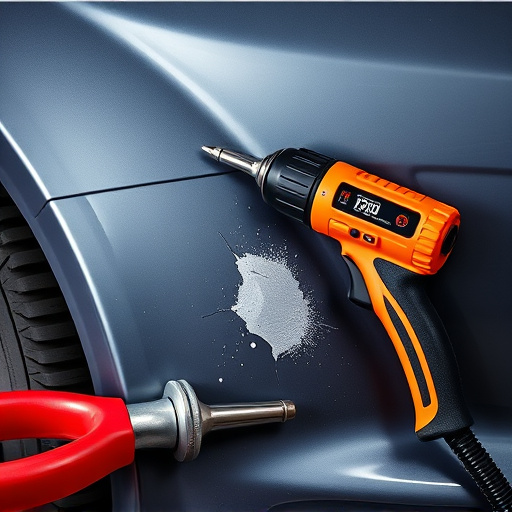
Tesla’s repeater cameras are an innovative safety feature designed to enhance visibility and prevent accidents. These cameras, strategically placed on a vehicle, provide drivers with a 360-degree view around their car, especially in tight spaces or low-visibility conditions. When a Tesla experiences side collision damage, like a fender repair scenario, the repeater camera replacement becomes a crucial step in ensuring optimal safety and functionality.
The camera’s primary role is to repeat the driver’s field of view, showcasing what they see through their car’s mirrors on the center console display. This feature allows for improved awareness while parking or navigating narrow areas, making it an invaluable tool in car body repair processes. An automotive body shop specializing in Tesla repairs would handle such tasks, ensuring precise replacement and seamless integration back into the vehicle’s system.
Assessing Side Collision Damage and Its Impact on Camera Systems
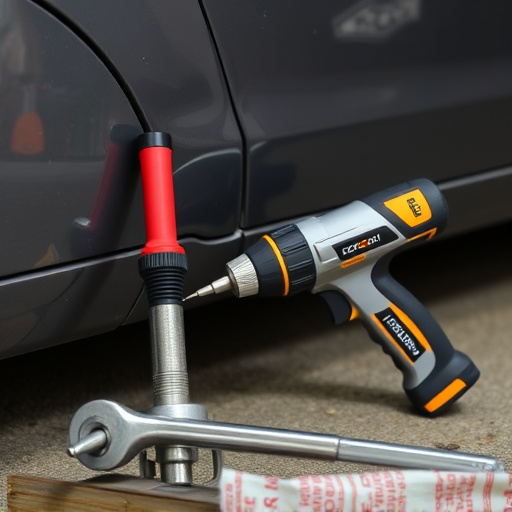
When a Tesla experiences a side collision, it’s crucial to assess the damage not just to structural components but also to its advanced camera systems. These cameras play a vital role in the car’s safety features, including autonomous driving and lane departure warnings. Even minor impacts can affect their functionality, leading to false readings or system malfunctions.
During the inspection, professionals should pay close attention to any visible signs of damage around the camera lenses or housing. A thorough examination includes checking for cracks, chips, or misalignments that could compromise the camera’s ability to capture clear and accurate images. In cases of significant collision damage, a Tesla repeater camera replacement might be necessary to ensure optimal performance and safety, similar to processes involved in car dent removal and car body restoration for other vehicle components.
Step-by-Step Guide to Replacing a Tesla Repeater Camera After Collision Damage

Replacing a Tesla repeater camera after collision damage involves a few precise steps to ensure optimal performance and aesthetic restoration. First, assess the extent of the damage to both the camera housing and surrounding car bodywork. If there are visible dents or cracks, consider using paintless dent repair techniques to restore the area without extensive painting. This not only maintains the vehicle’s original finish but also aligns with Tesla’s sleek design philosophy.
Once the car bodywork services are complete, gather your replacement camera, which can be sourced from authorized Tesla parts suppliers. Turn off the vehicle and locate the repeater camera module behind the exterior mirror. Disconnect the power supply to the camera before removing any existing screws or adhesive holding it in place. Carefully extract the old camera, taking note of its orientation for proper installation of the new one. Reinstall the fresh camera, ensuring all connections are secure, then test its functionality from various angles to confirm a seamless replacement.
After a side collision, a Tesla repeater camera replacement may be necessary to restore your vehicle’s advanced driver-assistance systems (ADAS) functionality. By following a systematic approach outlined in this guide, you can effectively replace the damaged camera, ensuring your Tesla maintains its safety features and performance. Remember, prompt action is crucial in mitigating potential risks associated with collision damage, especially to sensitive electronic components like repeater cameras.

